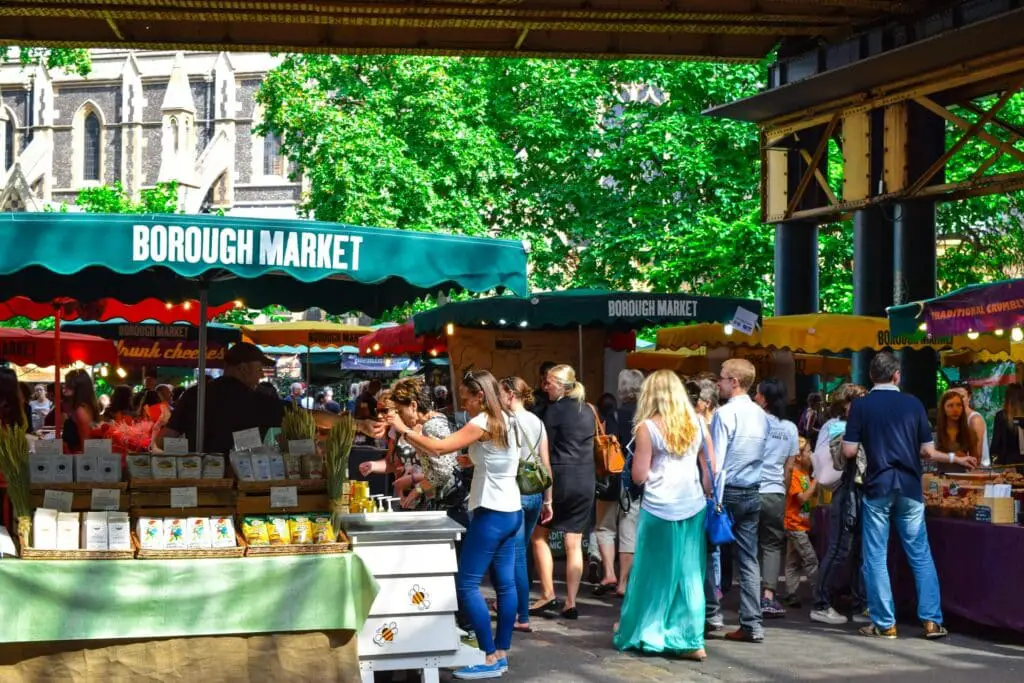Travelers chasing authentic tastes and real cultural moments almost always end up at the world’s best street food markets. These local markets serve up traditional dishes made right in front of you, making them a must for anyone who loves food. Bangkok’s Chatuchak Market brings bold flavors, while Gwangjang Market in Seoul tempts with unique bites.
Food markets worldwide give visitors something truly memorable, sometimes it’s a dish, and sometimes just a feeling. The smells, sounds, and energy of these markets put local life right in your face. From creative snacks in Asia to crepes or pizza slices in Europe, every market shows off what makes each place special. Exploring street food markets isn’t just about eating, it’s about discovering local traditions and meeting people who keep culinary heritage alive.
Key Takeaways
- Street food markets give travelers direct access to authentic local flavors.
- Top food markets can be found in major cities and off-the-beaten-path places worldwide.
- Each market showcases regional dishes and unique food traditions.
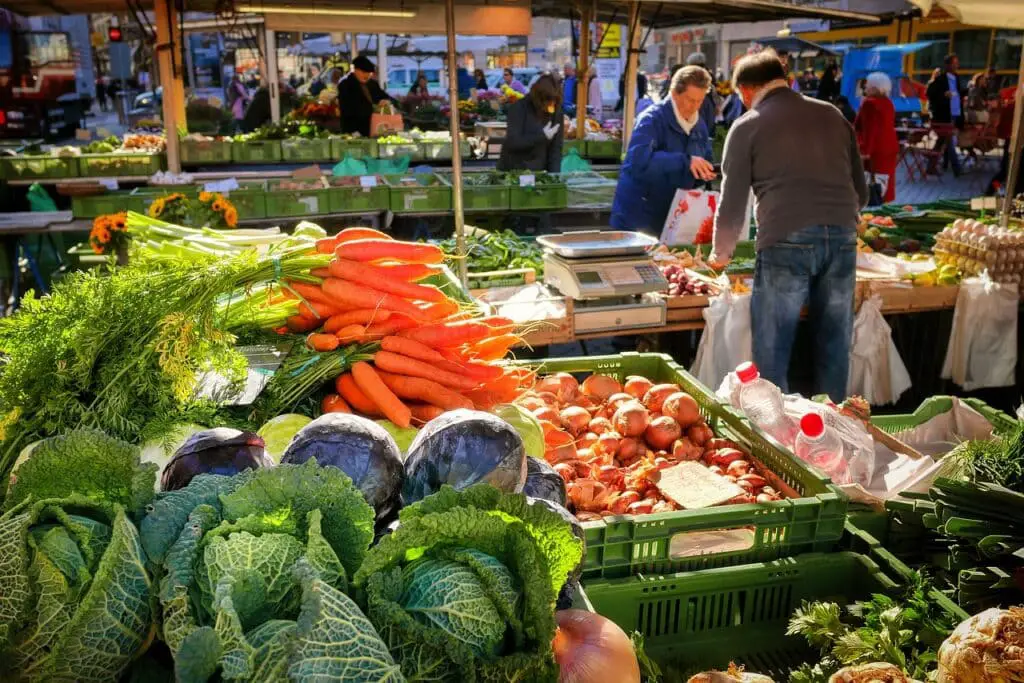
What Makes Street Food Markets a Must-Visit Experience
Street food markets deliver a wild mix of sights, sounds, and tastes that totally immerse visitors in new cultures. They’re a shortcut to authentic flavors and let travelers get up close with local traditions.
Vibrant Atmosphere
Food markets buzz with energy. Stalls overflow with colorful foods, fresh produce, and a jumble of cooking, music, and chatter. The air smells like grilled meats, spices, and sweets, honestly, sometimes it’s overwhelming in the best way. Crowds drift from stall to stall, meeting local vendors and exploring new dishes. Everyone’s there for the food and the community. You’ll see families eating together, friends laughing, and travelers sampling dishes right alongside locals. Markets like Bangkok’s Chatuchak are especially famous for their crowds and chaos, perfect for people-watching and soaking up local culture. The energy is contagious, and each visit ends up being a highlight of any food adventure.
Diverse Culinary Delights
These markets show off a wild range of eats from all over the world. There are savory snacks like dumplings, empanadas, and tacos, plus sweet treats like churros, and fruit desserts. Foodies can try both old-school favorites and new spins on classics. Many markets have specialty dishes, you just can’t get anywhere else.
Local cooks, sometimes following family recipes, serve up flavors that feel new and authentic every time. The Ferry Plaza Farmers’ Market in San Francisco is a good example, with fresh produce, artisanal foods, and street food all in the same place. It’s a one-stop shop for California’s food culture.
Local Flavors and Food Culture
The markets open the door to authentic local flavors and food culture. Dishes use region-specific spices, produce, and techniques that reflect local history and traditions. Eating at these markets is a cultural experience, not just a meal. Vendors often share stories about their recipes and ingredients, giving you a better sense of the community’s culinary roots.
Markets in Asia, Europe, and South America have become symbols of national identity, letting visitors really get hands-on with street food culture. Trying different stalls lets food lovers taste the true heart of a city or country. For a lot of travelers, finding these real local flavors is the highlight of their culinary journey around the world.
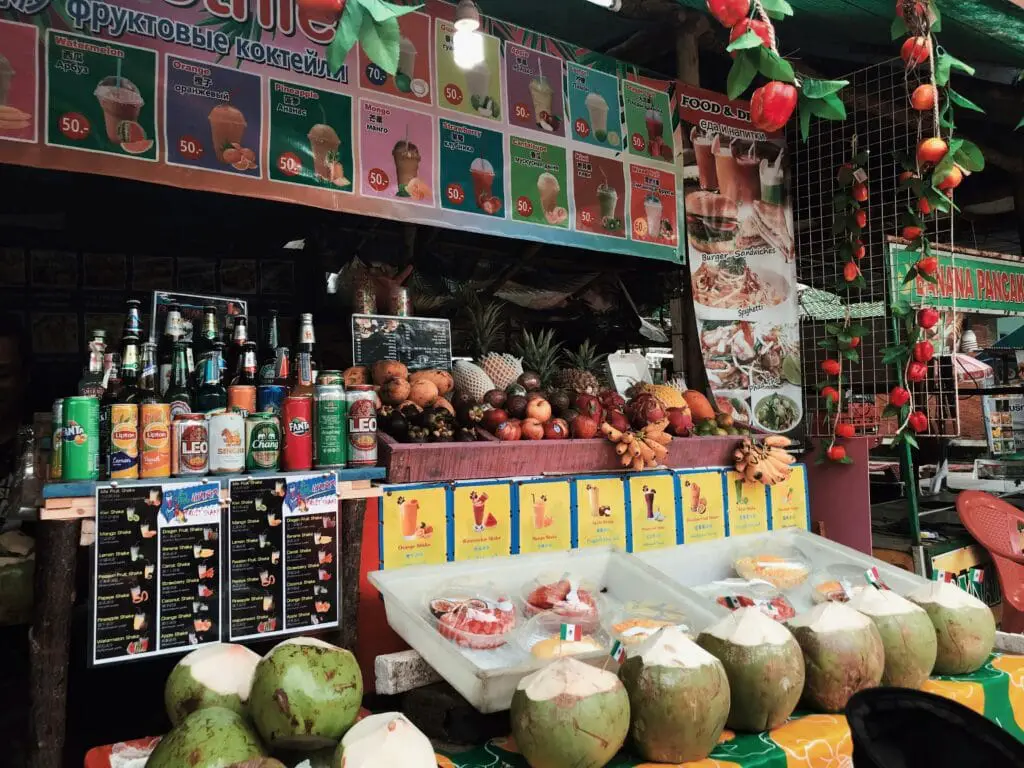
Top Street Food Markets Around the World
Street food markets offer a real taste of local culture through unique dishes and vibrant scenes. Each city’s market highlights signature ingredients and draws food lovers from everywhere.
Chatuchak Weekend Market, Bangkok
Chatuchak Weekend Market in Bangkok is one of the world’s largest outdoor markets. With over 15,000 stalls, it covers everything from street food to clothes, antiques, and plants. You can try grilled pork skewers (Moo Ping), coconut ice cream, spicy papaya salad, and classic Thai milk tea. Food vendors pop up all over, so it’s easy to snack as you wander.
The buzzing vibe, low prices, and wild variety make Chatuchak a favorite with locals and travelers alike. The market is only fully open on weekends and gets crowded fast, so showing up early is smart. Tip: Bring cash and grab small portions from lots of stalls to taste as much as you can.
La Boqueria, Barcelona
Just off Las Ramblas, La Boqueria is Barcelona’s most famous food market. It’s packed with fruits, fresh seafood, Spanish cheeses, and local meats. Tapas bars and stalls let you try Catalan classics like jamón ibérico, fresh oysters, and bacalao (salt cod). The covered aisles fill up with chefs and home cooks searching for top-quality ingredients.
Many vendors have been there for generations, keeping traditional recipes and flavors alive. La Boqueria is open every day except Sunday, and mornings are the busiest. It’s more than a place to eat—it’s a window into daily life in Barcelona and Spanish food culture.
Borough Market, London
Borough Market, in central London, is one of the city’s oldest and most famous food markets. It started over 1,000 years ago and now features both British and international street food. Vendors serve everything from fish and chips to Ethiopian stews and Italian pasta. Many stalls focus on fresh, seasonal products, with some chefs cooking right in front of you.
The market is open several days a week, but Saturdays are the craziest. Borough Market is famous for its lively mix of sights, tastes, and smells, and food lovers shouldn’t skip it when they’re in London. For more on its history and recent revival, check out Borough Market, London.
Shilin Night Market, Taipei
Shilin Night Market is Taipei’s biggest and most popular night market. It’s got a massive range of Taiwanese street food, from fried chicken steaks and oyster omelets to stinky tofu and bubble tea. The market’s endless stalls are squeezed into narrow lanes, and you’ll also find clothes, accessories, and local souvenirs. It’s a hotspot for young people and families alike. Shilin comes alive at night, especially on weekends. Food is affordable, and each stall usually specializes in just a couple of signature items, so you can try a lot in one evening. For more on the world’s best street food markets, see the best street food markets worldwide.
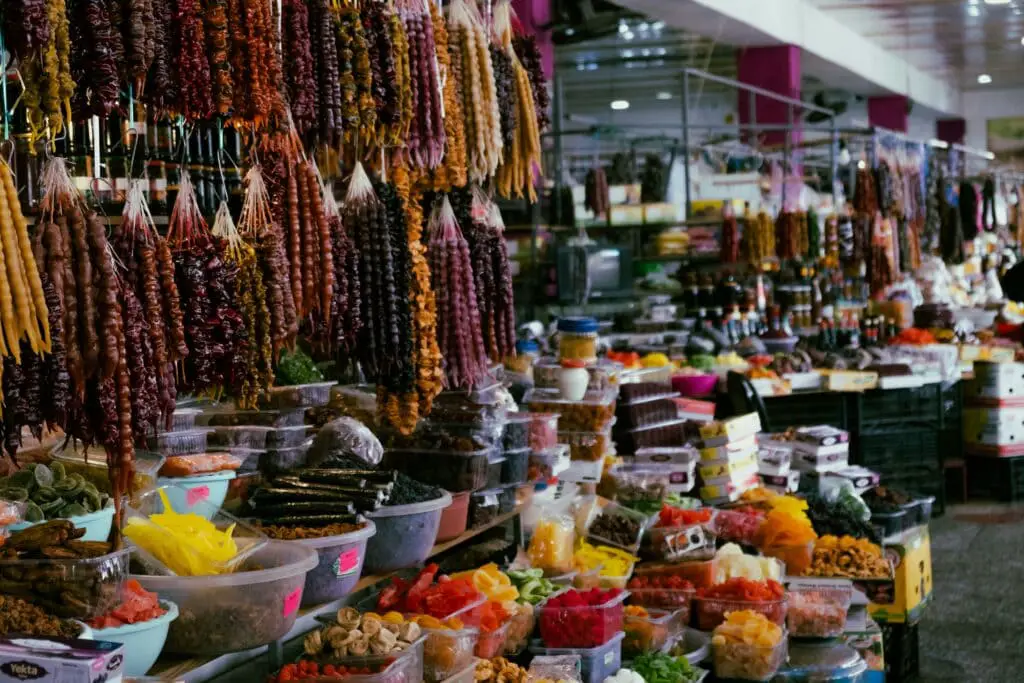
Regional Culinary Highlights and Signature Dishes
Street food markets worldwide are famous for their variety and local favorites. Every place has unique dishes and ingredients that tell its food story.
Southeast Asian Street Food
Southeast Asia’s street food markets are known for their lively atmosphere and iconic dishes. In Bangkok, markets are packed for pad thai—stir-fried noodles with shrimp or chicken. Chatuchak is famous for spicy som tam (green papaya salad with chili and lime) and mango sticky rice, a sweet treat with ripe mango and coconut sticky rice. Vietnam has pho, a delicate noodle soup, and banh mi, a crisp baguette sandwich loaded with meat, herbs, and pickled veggies. In Taiwan, street vendors serve stinky tofu, bubble tea, and sizzling oyster omelets. Thailand’s coconut ice cream, grilled meats, and tropical fruits like dragon fruit are everywhere. Seafood options run from grilled squid to snail soup and fish balls.
Latin American Flavors
Latin American markets celebrate tradition and bold spices.
In Mexico, tacos are the star, al pastor, carne asada, topped with salsa and lime. Vendors sell fluffy tamales in corn husks and empanadas stuffed with cheese, beef, or veggies. There’s grilled meat, quesadillas, and fruit cups with chili powder. South American markets, especially in Peru and Colombia, serve ceviche, anticuchos (grilled skewers), and even guinea pig. Fresh fruit juices and arepas make for quick snacks. Each bite captures the local culture, mixing comfort foods with adventurous flavors.
Middle Eastern and Mediterranean Delicacies
Markets in the Middle East and Mediterranean are packed with rich aromas and colors. Falafel, crispy chickpea balls, are everywhere, usually in pita with tahini and veggies. Vendors grill juicy kebabs (lamb, beef, or chicken), often with rice or flatbread. Sweets like baklava, loaded with nuts and honey, are a must at Turkish and Greek stalls. People also go for simit, a sesame bread ring, and panelle, chickpea fritters from Sicily. Fresh salads, hummus, and stuffed grape leaves round out the menu, balancing hearty flavors and fresh produce.
Classic European Eats
In Europe, food markets highlight both old-school and new dishes. Italian stalls serve arancini, fried rice balls with cheese or meat, and panelle as a crisp snack. French markets are loaded with fresh-baked bread, cheeses, and pastries. Turkish and Greek vendors offer simit and baklava, plus grilled meats and veggies. In Spain, food stalls are packed with tapas, seafood, and hearty stews. Eastern Europe brings dumplings, sausages, and even matcha desserts. Many markets also have international stalls, Japanese takoyaki, sashimi, and bubble tea, showing how these places bring global flavors together. For a closer look at some top street food markets, check out this guide to vibrant street food markets.
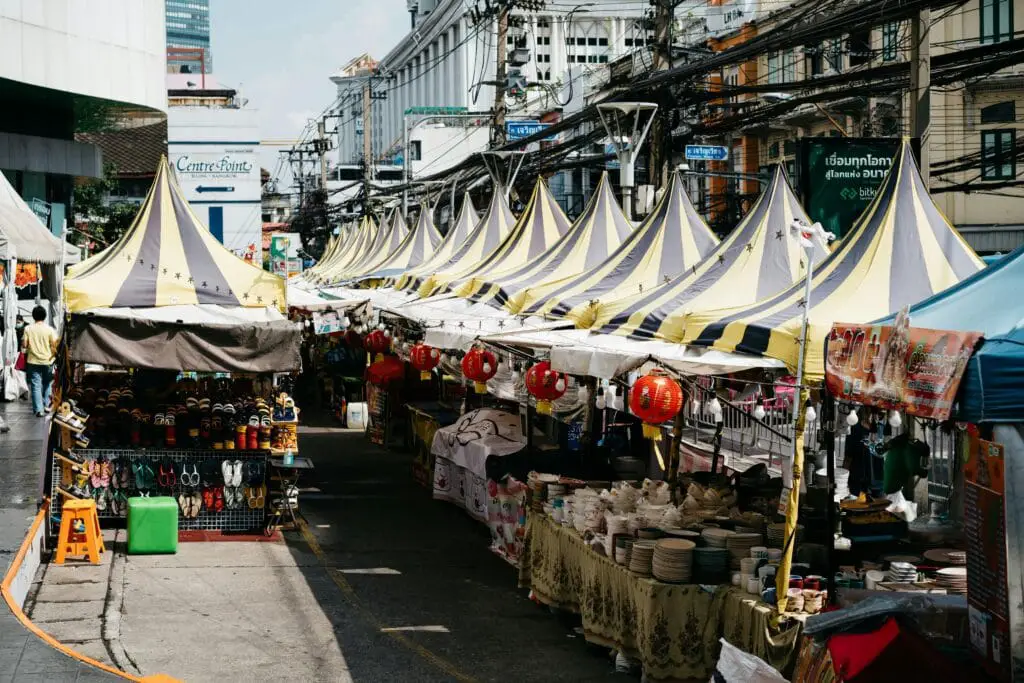
Insider Tips for Food Lovers: Navigating Local Markets
If you’re hunting for the best markets, pay attention to how stalls are laid out, which local dishes everyone’s lining up for, and how multicultural roots shape the food and customs. Get curious about fresh produce, street snacks, and the stories behind each bite, it makes the whole experience more rewarding and real.
Exploring Food Stalls
Walking through a local food market early in the morning just hits differently. You see the freshest produce, and the vendors seem extra friendly at that hour. If you start early, you’ll probably find tastier seasonal fruits and veggies. Sometimes you even catch special breakfast items before they’re gone. Markets like Gwangjang in Seoul have a wild variety of stalls. Each one serves unique dishes, think bindae-tteok or mayak gimbap.
Locals usually flock to the best stalls, so following the crowd often leads to the tastiest food. Most markets split up into sections: meats, seafood, veggies, and ready-to-eat stuff. That makes it easier to plan your tasting adventure. Carrying small bills and a reusable bag just makes life simpler.
If you chat with stall owners, you might get recommendations or even a little food history. Sometimes you stumble onto hidden gems or free samples that way. Take a moment to watch how dishes are made, especially if you’re new to the scene. For more ideas, check out these tips for navigating food markets like a local.
Sampling Local Delicacies
Food markets are where you want to be for signature snacks and regional specialties. Vendors are usually pretty proud of their favorites, so don’t be shy, ask, “What’s your most popular dish?” and see where it leads. Trying a few small portions is smarter than filling up on the first thing you see. This way, you’ll get to taste more, dumplings, fresh juices, spicy noodles, you name it. Sharing with friends or other travelers is a solid move if you want to sample a bunch without overdoing it.
Each market has its own regional classics, and every city seems to have its own thing, so doing a little research before you go pays off. Look for stalls that are busy and clean. That’s usually a good sign the food’s worth trying.
Understanding Multicultural Heritage
Many famous food markets throw together international eats with traditional dishes. You can try Middle Eastern kebabs, Indian curries, Japanese sushi, and Mexican tacos, all under one roof. Stall owners often love sharing stories about how their recipes traveled and changed along the way. By tasting dishes with all sorts of spices and influences, you pick up a lot about the area’s multicultural history.
Food markets aren’t just for shopping, they’re like living museums of flavor. Tasting foods introduced by migrant communities or learning why certain spices are local favorites shows how markets shape food traditions. For more on this, read about how local markets reflect multicultural flavors and heritage.
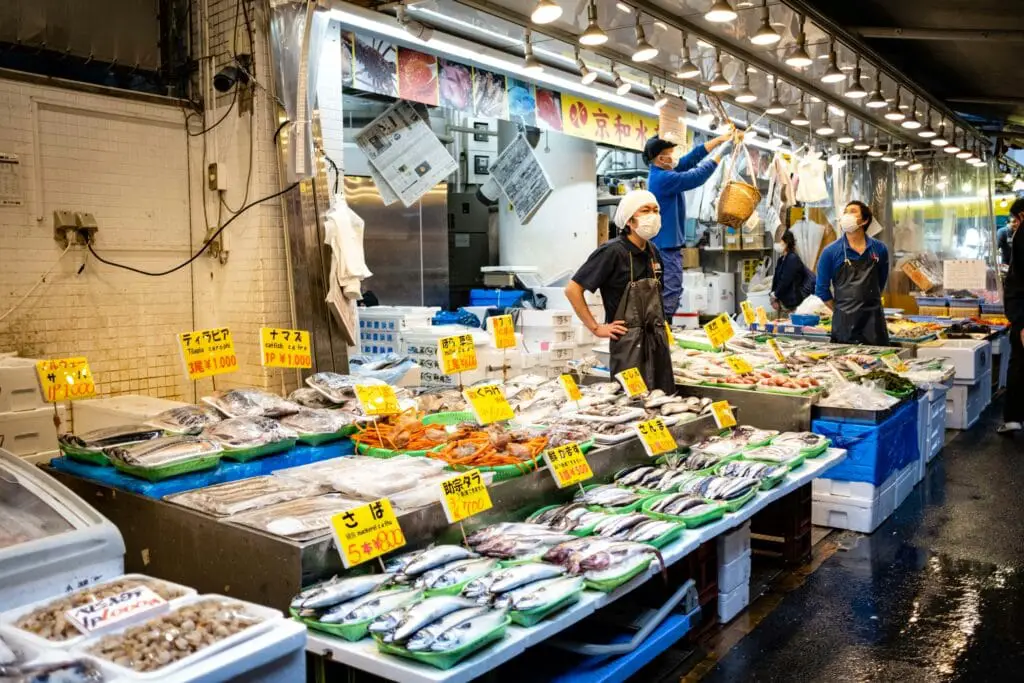
Iconic Markets in Major Cities Across Continents
Markets in big cities capture the local vibe. They’re packed with street foods and all sorts of products that draw both locals and tourists. The atmosphere is lively, with so many sights, sounds, and smells. It’s a crash course in a city’s culture.
Tsukiji Fish Market and Tsukiji Outer Market, Tokyo
Tsukiji Fish Market is kind of legendary for seafood lovers in Tokyo. The original wholesale part moved to Toyosu, but the Tsukiji Outer Market is still buzzing. You’ll find rows of food stalls and tiny eateries serving fresh sushi, sashimi, and grilled seafood. Vendors sell everything from bluefin tuna and uni to tamagoyaki (Japanese omelet).
Morning crowds gather to watch chefs at work or grab quick bites. Besides seafood, you’ll see kitchen tools, spices, and Japanese pickles for sale. The vibe is friendly but busy. Grilled scallops and sweet omelets are super popular and easy to try.
Ben Thanh Market and Bến Thành Market, Ho Chi Minh City
Ben Thanh Market sits right in the heart of Ho Chi Minh City. It’s famous for its energy and street food variety. The market runs from morning until night, with vendors selling pho, banh mi, and fresh spring rolls.
Inside, you’ll spot Vietnamese coffee stands, seafood, and fruit stalls. The indoor maze bursts with color and smells, while the night market outside is all about grilled skewers and noodles. You can also pick up spices, textiles, and local crafts here. Bargaining is expected, and the place draws both locals and travelers looking for Vietnamese street food favorites.
Mercado de San Juan, Mexico City
Mercado de San Juan in Mexico City is the go-to for fresh and gourmet ingredients. Locals come here for wild mushrooms, Spanish cheeses, and specialty meats. Street food vendors serve up tacos, tortas, and ceviche, often using ingredients from nearby stalls.
The market is known for rare finds like edible insects and tropical fruits. Chefs and adventurous eaters love this place. Simple tables and casual stands make tasting easy and affordable.
Queen Victoria Market, Melbourne
Queen Victoria Market is a Melbourne icon. It stretches over several city blocks, both indoors and out, with over 600 stalls. You can chow down on Aussie classics like hot jam doughnuts, gourmet sausages, and fresh seafood. There’s food from all over the world, too, reflecting Melbourne’s mix of cultures. The fresh produce is a highlight: fruits, veggies, meats, and cheeses are always in season. Special events and night markets pop up all year, bringing music, performers, and global eats. It’s a solid spot for tasting local food or grabbing groceries for the week.
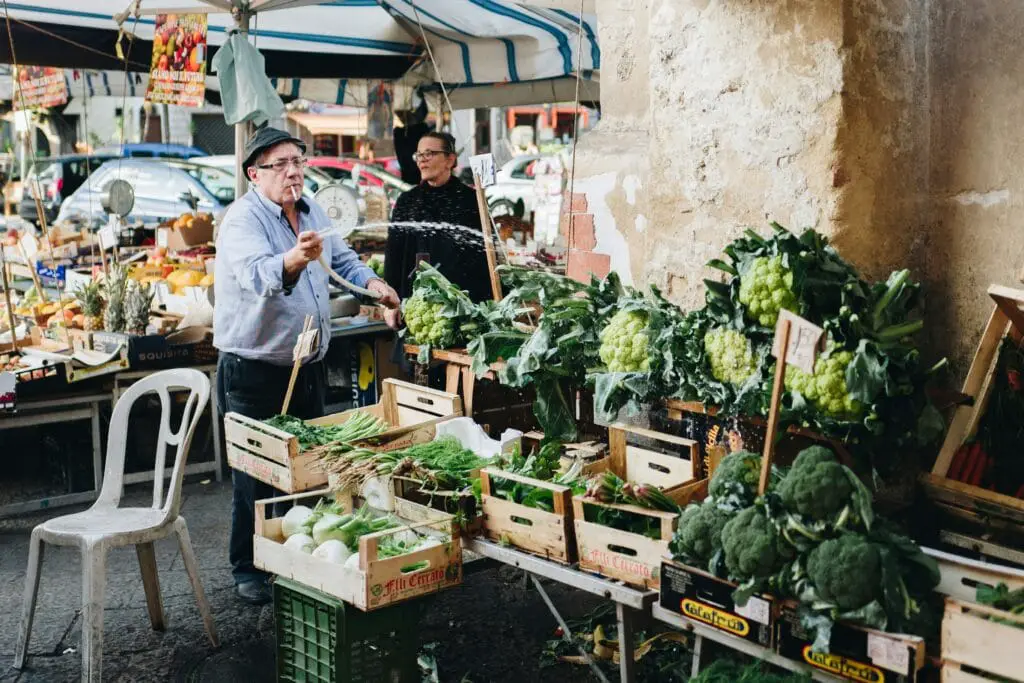
Off-the-Beaten-Path Food Markets and Unique Global Finds
Street food markets off the tourist trail have their own magic. You get to taste authentic local meals, chat with friendly vendors, and experience food traditions that have lasted for generations.
Smorgasburg, New York
Smorgasburg in Brooklyn is one of the biggest open-air food markets in the U.S. Every weekend, over 100 vendors line the waterfront with creative eats. You’ll spot everything from ramen, burgers, and lobster rolls to vegan tacos. The market is famous for bold flavors and Instagram-worthy food. There’s plenty of seating, so you can relax and sample a bunch of things.
Smorgasburg is a launchpad for new chefs and food start-ups. Many go on to open restaurants around New York and beyond. Whether you’re a foodie or just curious, you’ll find something that surprises you.
Ballarò Market, Palermo
Ballarò Market in Palermo, Sicily, is one of Italy’s oldest street markets. It winds through narrow streets, full of the smell of grilled seafood, fresh bread, and Sicilian pastries. Vendors serve arancini (fried rice balls), panelle (chickpea fritters), and cannoli. You can watch the food being made right in front of you or chat with locals about old recipes.
This market isn’t polished or touristy, it’s raw, noisy, and colorful. You’ll also find local cheese, olives, and produce from nearby farms. If you like places like San Telmo in Argentina or Kadıköy Market in Istanbul, Ballarò’s atmosphere will feel just right.
Khan el-Khalili, Cairo
Khan el-Khalili in Cairo has been around since the 14th century. It’s best known for spices, teas, and hand-crafted goods, but the food section is a real find. Stalls serve koshari (lentil, rice, and pasta), falafel wraps, and sweet pastries like basbousa. The air’s thick with cardamom, grilled meat, and fresh bread. Unlike modern markets in places like Paris or Rome, Khan el-Khalili gives you a taste of Egypt’s traditional street food. Try hibiscus tea and desserts made from dates and nuts.
Mohammed Ali Road, Mumbai
Mohammed Ali Road is a street food hotspot in Mumbai, especially during Ramadan. Stalls sell kebabs, biryanis, and sweets like malpua and phirni. The place comes alive at night, with crowds gathering for grilled meats and fresh bread. Vendors cook over open flames, serving dishes passed down in families for decades. You can sit at small tables or just eat while standing.
Mohammed Ali Road is often compared to markets in Istanbul and Beijing for its variety and buzz. Evening is the best time to catch the full range of snacks and desserts.
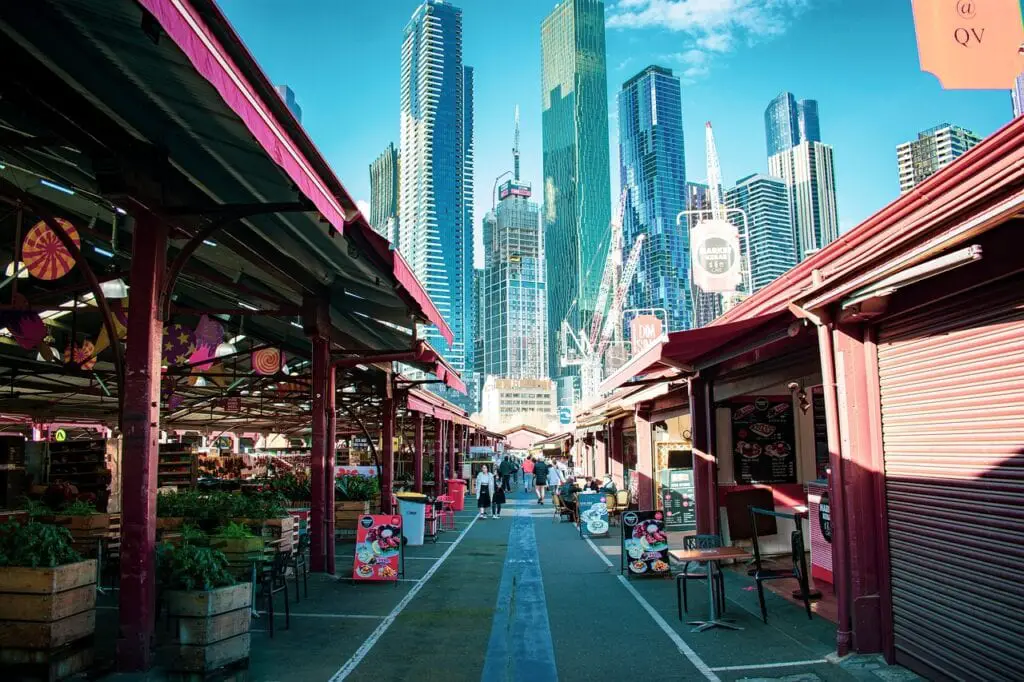
Frequently Asked Questions
Travelers can find exceptional street food markets and farmers’ markets on almost every continent. These spots showcase local dishes, seasonal ingredients, and double as gathering places for locals and tourists alike.
What are some must-visit street food markets around the globe?
Bangkok’s Chatuchak Market is massive and packed with street food in Thailand. Gwangjang Market in Seoul is famous for classic Korean street foods. Borough Market in London and La Boqueria in Barcelona are also top picks in Europe.
Which food markets worldwide are known for their unique local cuisine?
Gwangjang Market in Seoul has bindae-tteok (mung bean pancakes) and mayak gimbap (mini seaweed rice rolls). In Morocco, Jemaa el-Fnaa in Marrakesh is the place for spiced lamb, tagines, and sweet mint tea. Mercado de San Juan in Mexico City is great for exotic eats and fresh produce.
Can you list the top food markets that offer an authentic taste of their city’s culture?
Tokyo’s Tsukiji Outer Market is a favorite for Japanese sushi and street snacks. Istanbul’s Grand Bazaar and nearby food stalls serve Turkish delights and kebabs. Singapore’s Maxwell Food Centre is known for chicken rice and satay.
What are the iconic food markets every foodie should experience?
Bangkok’s Chatuchak Market and Barcelona’s La Boqueria are must-sees for their food variety. Florence’s Mercato Centrale is packed with Italian dishes and local wines. Gwangjang Market in Seoul is still a go-to for authentic Korean flavors.
Which farmers markets around the world provide the best farm-to-table experiences?
Union Square Greenmarket in New York stands out for farm-fresh produce and baked goods. Sydney’s Carriageworks Farmers Market is all about organic, local foods. Vancouver’s Granville Island Public Market is packed with Pacific Northwest-grown and made foods.
What are the biggest markets in the world-renowned for their street food variety?
Chatuchak Market in Bangkok is massive, with hundreds of food stalls packed inside. People often call it one of the world’s largest markets for street food.
Istanbul’s Grand Bazaar mixes shopping with all kinds of local snacks and sweet treats. If you want variety, it’s hard to beat.
Mexico City’s Mercado de la Merced attracts crowds for its endless street food options and super fresh ingredients. Honestly, just wandering through is an experience in itself.
You Might Also Like:
If you enjoyed this post on Street Markets for The ultimate Food Lover, you might also like: How to Experience the World’s Best Food Destinations, Top Foodie Destinations You Need to Visit Now, Must-Know Dining Customs Around the World: Avoid Embarrassing Mistakes
